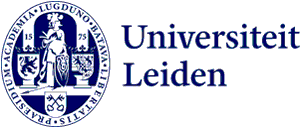Lecture | Faculty Lecture and Photo Exposition
Water Legacy: Mayan world meets the Netherlands
- Richard D. Hansen and Enrique Hernández
- Date
- Tuesday 11 March 2025
- Time
- Address
-
Van Steenis
Einsteinweg 2
2333 CC Leiden - Room
- Reuvens Hall (Main Hall Van Steenis building)

Abstract
The ancient Maya city of El Mirador, located in the Guatemalan jungle, was one of the most important and largest cities during the Preclassic period (ca. 1200 BCE–150 CE). Excavations led by the “Proyecto Arqueológico Cuenca Mirador” have uncovered evidence of vast settlements, temples, ball courts, and roads. LiDAR a technology used by the experts, a large contiguous area within the Mirador-Calakmul Karst Basin (MCKB) of northern Guatemala has been identified as a unique concentration of Preclassic Maya sites, consisting of 964 sites that form 417 ancient cities, towns, and villages. The larger monumental centers are joined by 177 km of Preclassic causeways forming what is believed to be the first superhighway system in the world. Massive cities with monumental architecture flourished in the area thanks to a heavy focus on chinampa and terrace agricultural systems, and forming what must have been a powerful political and economic state system.
The lectures will present an overview of the archaeological sites of “Cuenca el Mirado” as well as the importance of the rainwater management system that allowed ancient residents to capture water, redirect it, and store it during dry seasons. Water control and management was a key innovation in Maya history, allowing the development of life and cities in this region that is characterized by little surface water and seasonal rainfall patterns. It also contributed to population growth and the expansion and maintenance of agriculture.
During this event, we plan to showcase an overview of Dutch water expertise and knowledge on water management, highlighting how modern techniques relate to the ancient technologies of the Maya. The Dutch water sector, known for its pioneering solutions and innovative approaches, focuses on international collaboration to address global water challenges. This event aims to bridge the historical ingenuity of the Maya with contemporary Dutch innovations, offering valuable insights into sustainable water management practices.
As we face the uncertainties of climate change in our world today, we look to the past for inspiration. We hope this lecture and photographic exhibition provides some examples of the impact Maya people had on their landscapes and their ingenuity in the construction of cities, roads, and water management systems – all very much central to the development of the Netherlands as well.
The Faculty Lecture will be followed by drinks.
Programme
- Walk-in coffee, tea and cookies: 15:15 hours
- Faculty Lecture: 15:30-17:00 hours
- Official opening exhibition photos after the Faculty Lecture
- Faculty Drinks and snacks: 17:00-18:30 hours
About the speakers
Richard D. Hansen is a Research Professor at Idaho State University in the Department of Anthropology. He is the founder and President of The Foundation for Anthropological Research and Environmental Studies (FARES), and director of the Mirador Basin Project in Guatemala, having conducted research for 45 years. He has published 228 papers, 3 books, and 31 technical volumes for the Government of Guatemala.
Enrique Hernández has been a part of the Mirador Basin Project since 2004. He started with regional mapping and is now a specialist in that area. His most recent work is focused on the excavation of roads and lowlands. Enrique has a licenciatura degree in Archeology from the School of History of Universidad de San Carlos de Guatemala.
